Material selection in full arch implant-supported restoration defines both functional success and clinical longevity. Learn about the key variables influencing material choice, common materials used in this prosthetic, and how to choose the right materials.

Table of contents [Show]
- Introduction
- Why Material Selection Defines Success In Full Arch Implant Supported Restoration
- Clinician vs. Technician: Who Must Be A Decision-Maker?
- The Key Variables In Material Selection
- Common Materials Used In Full Arch Implant Supported Restoration
- How To Choose Right Materials For Full Arch Implant-Supported Restoration
- Conclusion
Introduction
In the past decade, the full arch implant supported restoration (also known as All-on-X) has transformed lives and redefined what’s possible in prosthetic dentistry. By providing patients with a fixed, natural-looking, and long-lasting prosthetic, the full arch restoration has become one of the most sought-after solutions for edentulous cases, representing an opportunity to restore both function and confidence. Behind every successful All-on-X case lies one crucial decision which is material selection. It determines not only aesthetics and durability, but also the long-term relationship between clinician, laboratory, and patient. In the early days, material choices were limited, and workflows were guided by experience and intuition. Today, the options are far more diverse, for example high-translucency multilayer zirconia or high-performance polymers. Each material comes with its own science, its own benefits, and its own trade-offs.
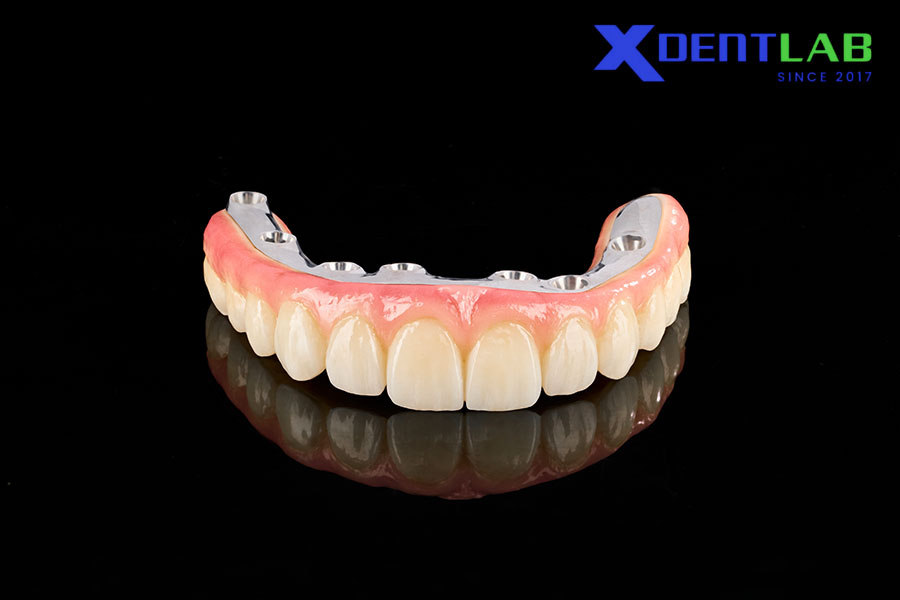
This abundance of choice is both a blessing and a challenge. More materials mean greater customization potential, but also more complexity, more decision points, and more chances for misalignment between clinicians and laboratories. As the range of materials and techniques continues to expand, understanding how to make the right choice becomes essential. The question is no longer what materials exist but which one truly fits each unique case.
Why Material Selection Defines Success In Full Arch Implant Supported Restoration

Every full arch implant supported restoration is a system of interdependent variables such as the patient’s age, occlusal force, bone density, hygiene habits, esthetic expectations, restorative space, and cost. These factors influence how a material performs overtime. The wrong choice can lead to fracture, patient discomfort, or costly remakes; while the right one ensures durability, esthetics, and long-term satisfaction for both clinician and patient. A restoration that thrives in one mouth may fail in another if the underlying parameters differ.
For instance, zirconia remains the industry’s most widely adopted material for full-arch cases, admired for its strength, esthetics, and longevity. Yet zirconia is not infallible. If the restorative height is insufficient (less than 12–15 mm) or if the occlusal design concentrates stress in thin regions, fractures become a real risk. Conversely, hybrid systems that combine zirconia with a titanium framework can absorb functional loads more effectively, extending longevity and protecting the implants.
Ultimately, material selection is not a preference; it’s a prescription. It’s an engineering decision rooted in biology, physics, and aesthetics. And because each factor is unique to every patient, the laboratory’s consultative role has never been more critical.
Clinician vs. Technician: Who Must Be A Decision-Maker?
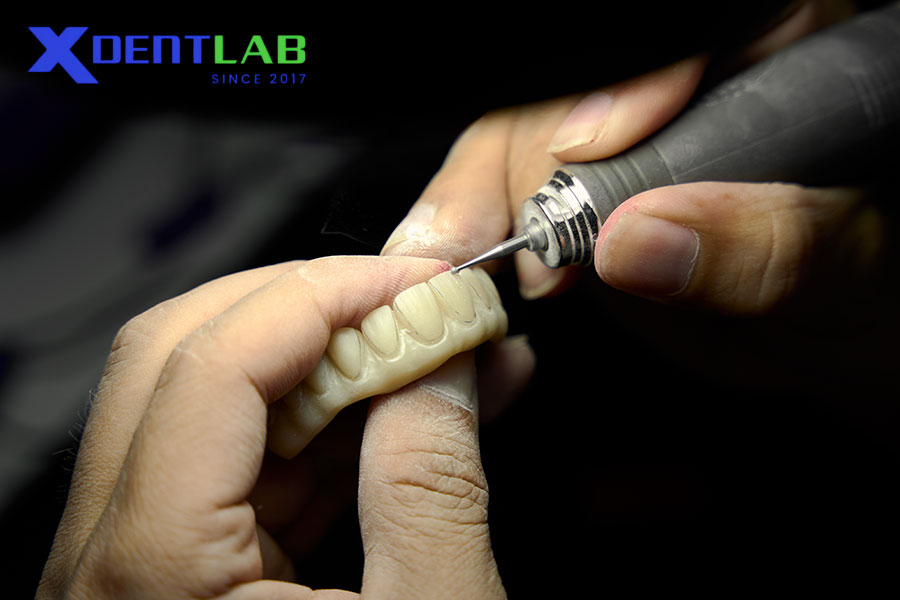
Traditionally, the clinician has the final say on materials. After all, the prosthesis is part of a medical treatment, and the clinician ultimately carries the responsibility for its clinical success. Yet, in the modern digital workflow, that decision is rarely effective in isolation. As restorative technologies advance, technicians and lab owners bring knowledge that directly shapes clinical outcomes, particularly in areas such as manufacturability, structural integrity, and esthetic predictability. For instance, when a clinician requests a monolithic zirconia framework for a case with insufficient restorative space, it is the laboratory’s responsibility to flag potential risks. Recommending a titanium-reinforced or hybrid substructure in such a scenario is not interference; it’s professional partnership.
From a broader perspective, this collaboration protects both parties. The technician’s command of sintering behavior, layering thickness, and flexural strength is not merely a production detail; it’s a form of clinical risk management. At the same time, the clinician’s understanding of patient physiology, bone quality, and occlusal dynamics ensures that the chosen material performs harmoniously within the body’s biological limits.
The most successful labs today are those that no longer define themselves as “fabricators,” but as strategic co-creators in the restorative process. They don’t simply produce what’s prescribed; they interpret, optimize, and elevate those prescriptions.
The Key Variables In Material Selection
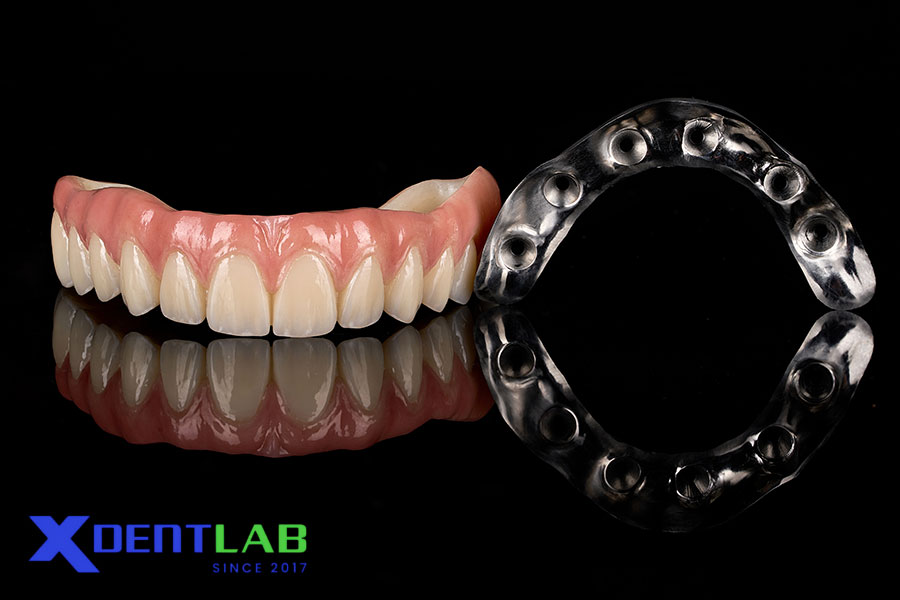
Material selection is a decision-making matrix where each factor impacts another. A single change in dimension, spacing, or bite force can alter what material is viable. Below are some of the most decisive variables:
Restorative Space (Vertical and Horizontal)
Among the most critical variables is restorative space. The available height and width determine not just the esthetic layering possibilities, but also the structural resilience of the prosthesis. When restorative height is reduced, for example, monolithic materials may no longer perform predictably under stress. In such cases, hybrid systems such as full arch zirconia with titanium bar can help maintain both integrity and aesthetics within spatial limitations.
Occlusal Force and Parafunction
No variable affects longevity more than bite dynamics. Bruxism, clenching, or uneven occlusal loads can quickly fatigue even the strongest material. This is where flexible or shock-absorbing frameworks, such as polymers or titanium-supported designs, play a vital role in mitigating stress distribution and protecting implants.
Patient Age and Longevity Expectation
A 40-year-old bruxer and a 75-year-old edentulous patient do not share the same material profile. Age informs bite force, expected lifespan, and comfort priorities. Younger patients often demand long-term durability, while older patients may prioritize lightness and retrievability. This is where balancing mechanical strength with biological comfort becomes both an art and a science.
Hygiene and Maintenance
Maintenance capability is often overlooked until failure occurs. Patients with limited dexterity, for example, may struggle with hygiene around fixed restorations. In these cases, materials that resist plaque accumulation or allow for removable frameworks can dramatically improve long-term outcomes, not just clinically, but in quality of life.
Esthetics and Translucency
Material evolution has also raised the bar for visual outcomes. High-translucency multilayer zirconia has transformed the way full arch restorations emulate natural enamel. Yet the very property that makes it beautiful also demands precise sintering and shade control to avoid inconsistencies.
Budget
Beyond clinical variables lies the economic one. Material selection directly influences production costs, patient pricing, and laboratory profitability. High-end materials like zirconia and titanium offer durability but require higher investment in both equipment and expertise. Meanwhile, composite or polymer-based options provide accessibility and faster turnaround, a balance many labs must strike between premium performance and market competitiveness.
Ultimately, understanding how these variables interact allows lab owners and managers to elevate their consultation process from habit-based to evidence-based. The true skill lies not in choosing a single “best” material, but in orchestrating multiple variables into a restoration that performs predictably, looks natural, and aligns with both clinical and financial goals.
Common Materials Used In Full Arch Implant Supported Restoration
Material selection in full arch implant-supported restorations remains one of the most influential factors in achieving predictable function, longevity, and esthetics. While new materials continue to emerge, three have established themselves as clinical mainstays which are PMMA, PEEK, and Zirconia. Each represents a different balance between mechanical behavior, biological response, and patient comfort.
PMMA
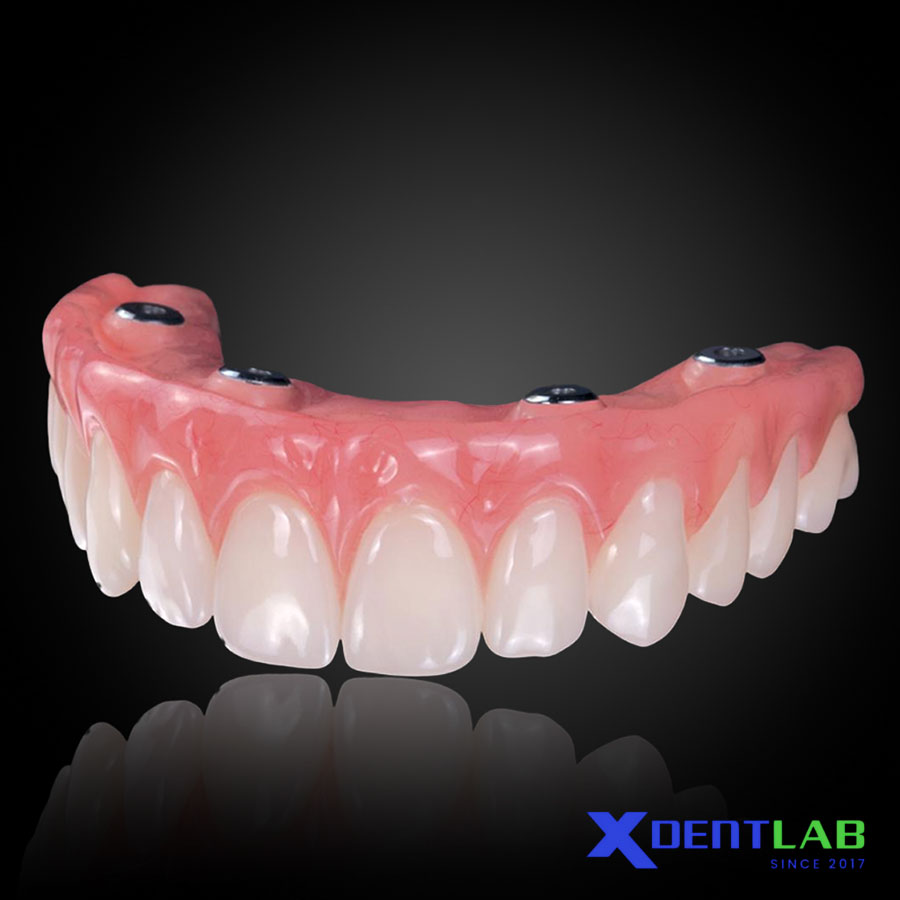
Polymethyl methacrylate (PMMA) has long served as the material of choice for interim full-arch restorations. Its lightweight composition, polishability, and ease of adjustment make it ideal during the osseointegration and soft-tissue healing phase.
In modern workflows, PMMA is often reinforced with a metal base, typically Cobalt-Chrome or Titanium, to enhance rigidity and precision. This combination provides patients with esthetic and functional comfort while giving clinicians time to fine-tune occlusion, phonetics, and vertical dimension before the definitive prosthesis is delivered.
Advantages: Esthetic, lightweight, cost-effective, easily repairable.
Limitations: Susceptible to wear, discoloration, and fracture under long-term load if used as a final restoration.
PEEK
Polyetheretherketone (PEEK) is one of the most promising thermoplastic polymers in modern dentistry. It is valued for its biocompatibility and bone-like elasticity. In full-arch applications, it provides a shock-absorbing framework that mimics the natural resilience of bone, helping to distribute occlusal forces more evenly. This property makes PEEK especially relevant for patients with high bite forces or compromised bone quality. However, despite its growing popularity, PEEK remains more technically demanding to process and bond, and its aesthetic limitations (opaque, low translucency) restrict its use in highly visible definitive restorations.
Advantages: Excellent shock absorption, lightweight, highly biocompatible.
Limitations: Esthetically limited, requires specialized surface treatment and bonding procedures, less established long-term data.
Zirconia
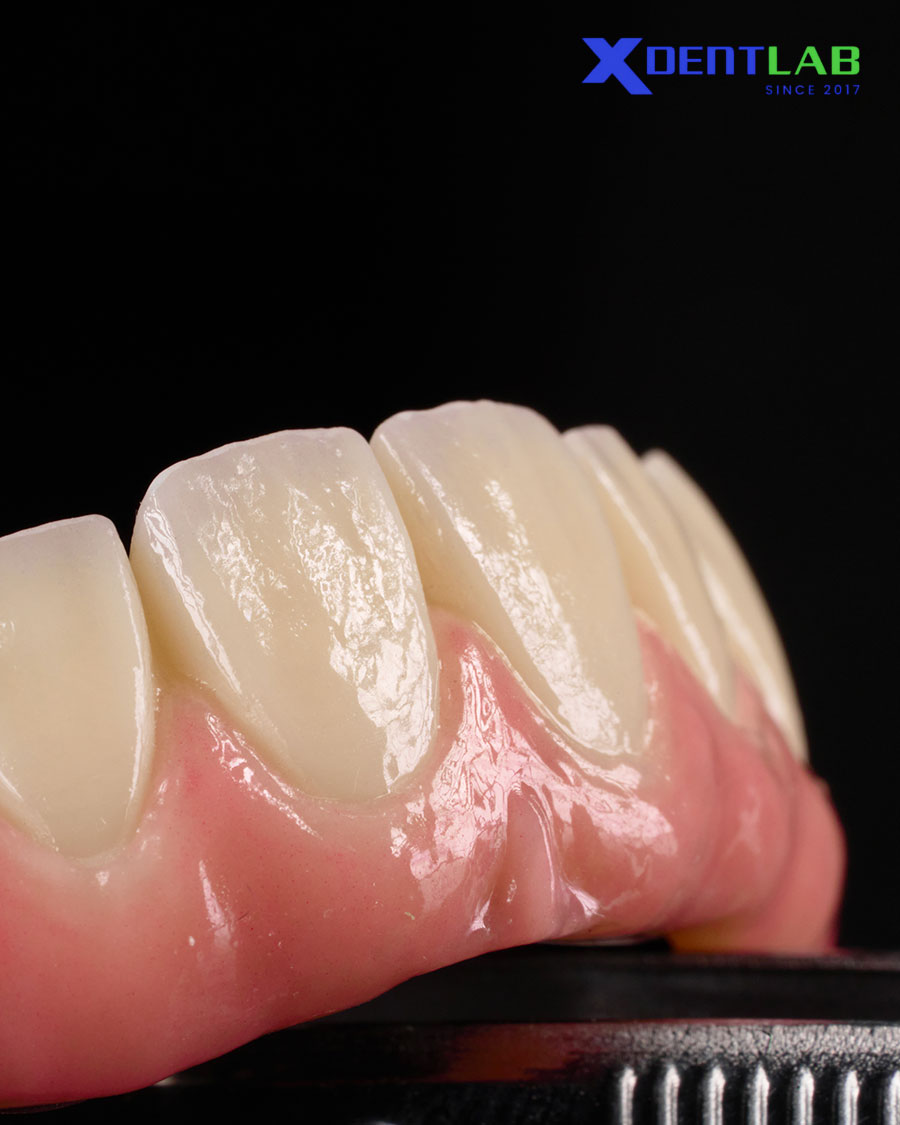
Zirconia has emerged as the gold standard for definitive full-arch restorations, offering exceptional flexural strength (often >1000 MPa), wear resistance, and esthetic translucency. Its low plaque accumulation and resistance to staining make it a preferred choice for long-term function and hygiene maintenance.
Two configurations dominate clinical use:
Monolithic Zirconia: A full-contour, single-material design ideal for sufficient restorative space. It offers lifelike esthetics with remarkable durability and minimal maintenance.
Zirconia with Titanium Bar: A hybrid approach used in limited-space or high-stress cases, where the titanium bar distributes functional loads while the zirconia overlay maintains the natural appearance.
At XDENT LAB, both configurations are designed through fully digital workflows, ensuring precise fit, controlled translucency, and consistent strength throughout the arch. Each framework is sintered under carefully calibrated cycles to prevent microfracture and ensure long-term stability.
Advantages: Exceptional durability, excellent esthetics, low plaque retention, predictable performance.
Limitations: Rigid under thin dimensions, minimal shock absorption, higher fabrication cost.
How To Choose Right Materials For Full Arch Implant-Supported Restoration
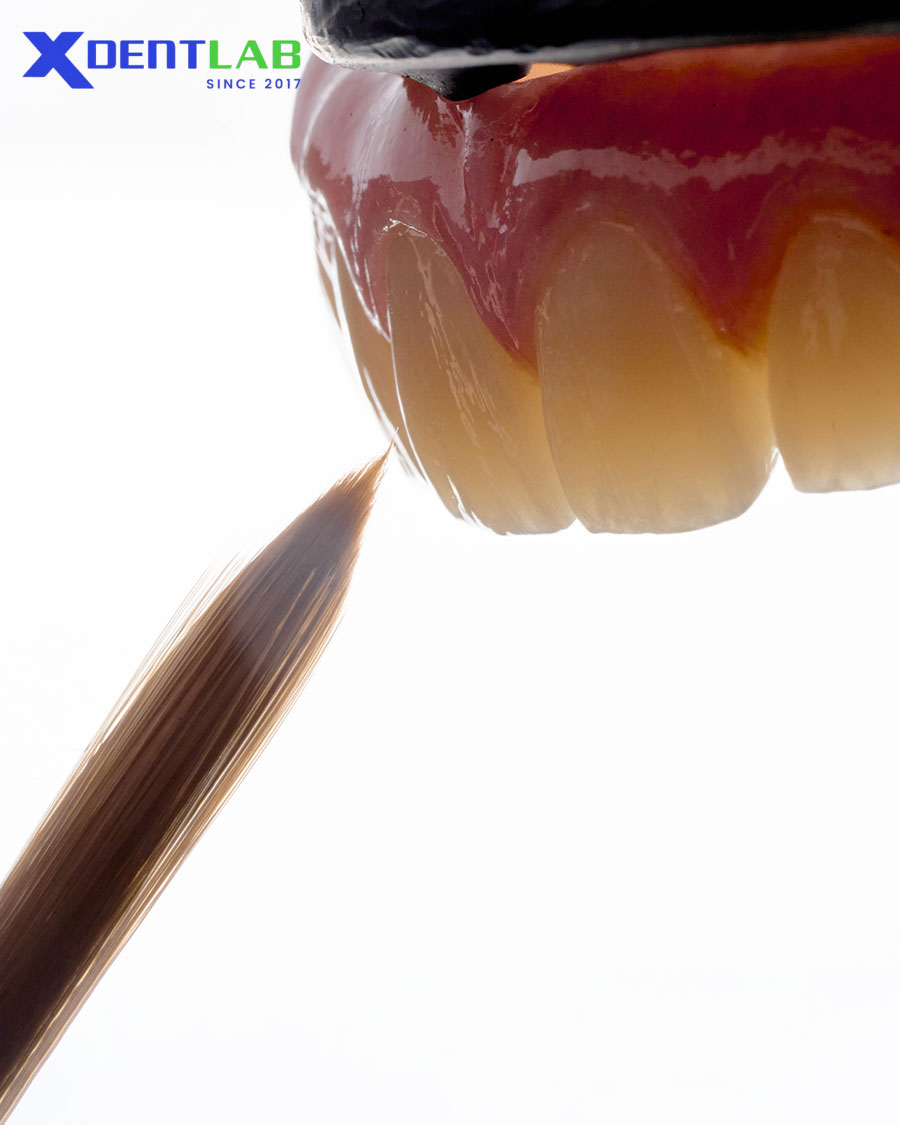
Start with the Biological Foundation
Every material must serve the patient’s biology first. Bone density, soft-tissue profile, and occlusal dynamics define how much load the restoration will endure and how it should distribute stress. For instance, a dense mandibular arch may tolerate monolithic zirconia, while a maxillary case with low bone support may demand a more forgiving hybrid framework. Ignoring biology in favor of aesthetics is often the first step toward failure.
Match Material to Mechanical Demands
The material should perform under the patient’s daily functional forces. Bruxers, grinders, and patients with strong occlusion require shock-absorbing solutions such as titanium-reinforced or polymer-based designs. In contrast, low-force cases can favor zirconia for its rigidity and polish retention. The question isn’t “What’s the best material?” but rather “Which material performs best under this patient’s forces?”
Evaluate The Restorative Space Early
Before scanning or milling begins, restorative space must be verified both vertically and horizontally. Too little clearance limits layering thickness and compromises mechanical integrity. If the space is under 12 mm, a monolithic zirconia arch becomes risky: not because the material is weak, but because the design no longer allows it to function properly. Labs that assess this early can prevent expensive remakes later.
Integrate Digital and Analog Insight
Digital workflows make material choice more predictable — simulations, stress mapping, and digital articulation can now model how materials behave under occlusion before fabrication. However, these tools must complement, not replace, technician judgment. Understanding sintering curves, surface polishing, and bonding behavior ensures digital designs translate into durable prosthetics.
Balance Esthetics with Maintenance
High-translucency zirconia produces stunning results, but it demands precision and controlled handling. Meanwhile, composite or PMMA designs are easier to adjust and repair chairside. Labs should align their recommendations with the patient’s lifestyle and maintenance capacity because a beautiful restoration that’s difficult to clean or maintain will not last.
Consider Economic Logic
Material selection affects not just outcomes but profitability. A higher-cost zirconia or titanium case can be justified when it reduces remakes and adjustments, protecting margins in the long term. For transitional or temporary solutions, PMMA and nanoceramics balance speed, cost, and aesthetics. Smart labs learn to align their case planning with both clinical logic and financial sustainability.
Collaborate, Don’t Just Comply
The most successful outcomes occur when clinicians and labs share accountability. Instead of simply producing what’s prescribed, proactive labs guide the conversation, explaining limitations, suggesting alternatives, and documenting rationale. Each recommendation builds trust and strengthens long-term partnerships.
Conclusion

The evolution of full-arch implant-supported restoration has redefined both patient experience and laboratory practice. As material science and digital workflows advance, success will depend less on what materials are used and more on how they are applied. In the end, the right material is not merely a matter of strength or beauty, but of judgment, the ability to interpret every case through the lens of science and human experience.
Acknowledgement: This article draws insights from articles: Guiding Material Selection in All-on-X Restorations, written by Lisa Astor (2025) & Prosthetic Materials Used for Implant-Supported Restorations and Their Biochemical Oral Interactions: A Narrative Review, written by Ionescu RN et al. (2022).
XDENT LAB is an expert in Lab-to-Lab Full Service from Vietnam, with the signature services of Removable & Implant, meeting U.S. market standards – approved by FDA & ISO. Founded in 2017, XDENT LAB has grown from local root to global reach, scaling with 2 factories and over 100 employees.. Our state-of-the-art technology, certified technicians, and commitment to compliance make us the trusted choice for dental practices looking to ensure quality and consistency in their products.

Our commitments are:
100% FDA-Approved Materials.
Large-Scale Manufacturing, high volume, remake rate < 1%.
2~3 days in lab (*digital file).
Your cost savings 30%.
Uninterrupted Manufacturing 365 days a year.
Contact us today to establish a strategy to reduce operating costs.
--------❃--------
Vietnam Dental Laboratory - XDENT LAB
🏢 Factory 1: 95/6 Tran Van Kieu Street, Binh Phu Ward, Ho Chi Minh City, Vietnam
🏢 Factory 2: Kizuna 3 Industrial Park, Can Giuoc Commune, Tay Ninh Province, Vietnam
☎ Hotline: 0919 796 718 📰 Get detailed pricing
Share this post:
Related Posts

Polymer brackets explained: From material composition to clinical performance, learn how these aesthetic braces are advancing orthodontics.
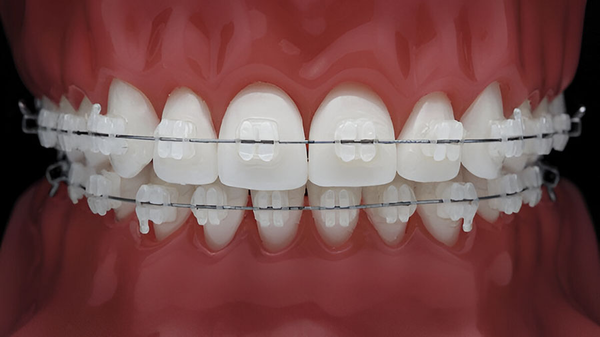
Zirconia brackets combine strength, aesthetics, and biocompatibility in orthodontics. Learn about their benefits, limitations, and advancements in 3D printing technology.

Learn how monocrystalline sapphire brackets are transforming ceramic orthodontics with superior optical clarity, reduced friction, and advanced laser compatibility. Discover their clinical advantages,...


